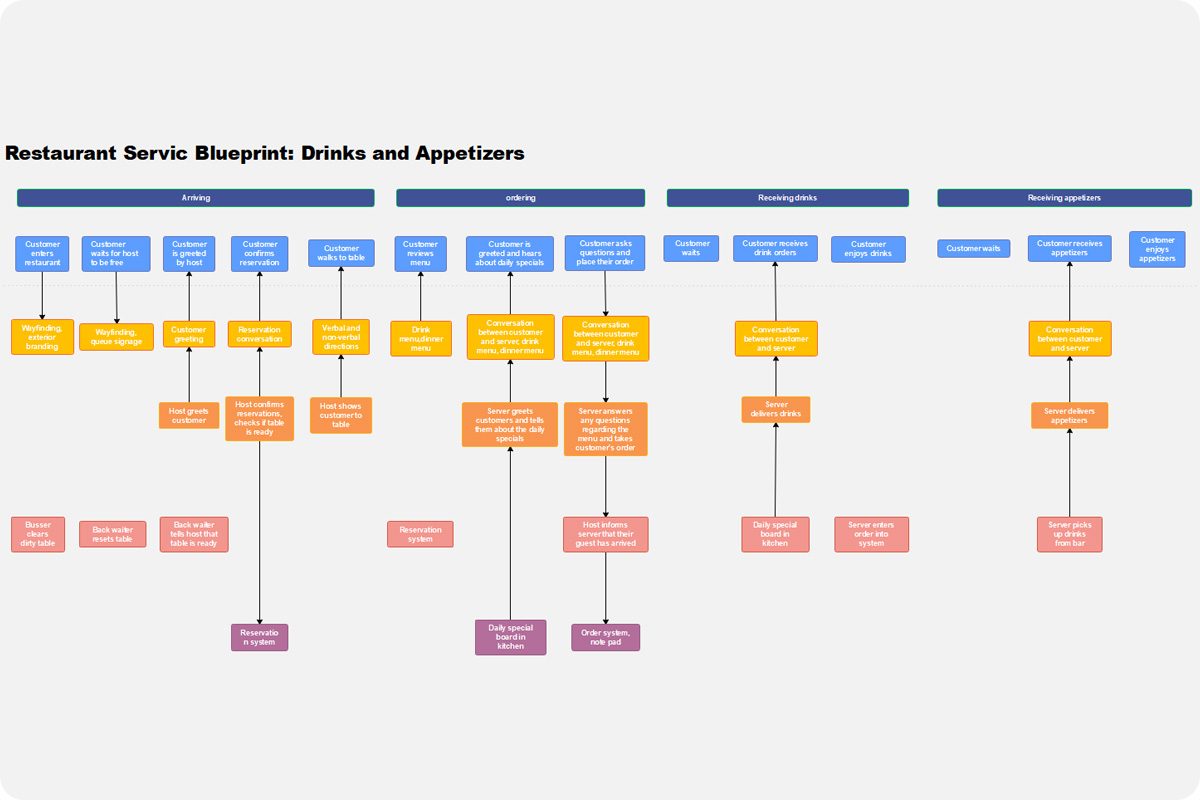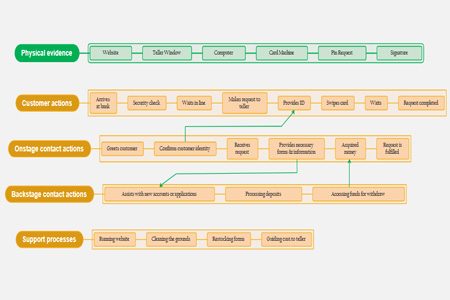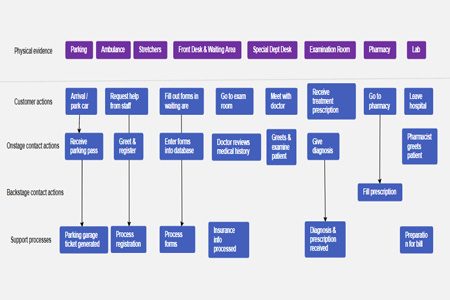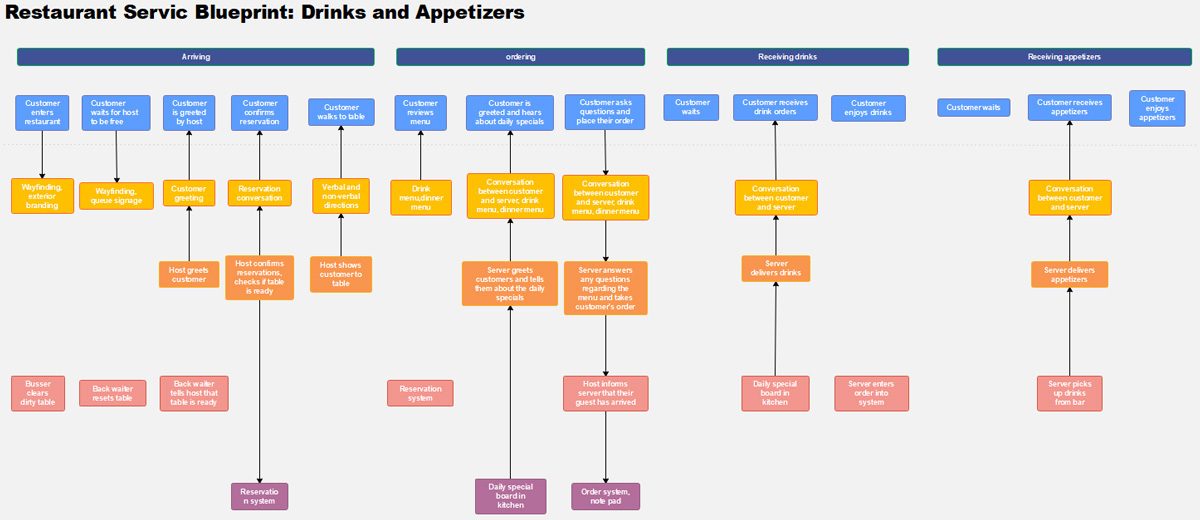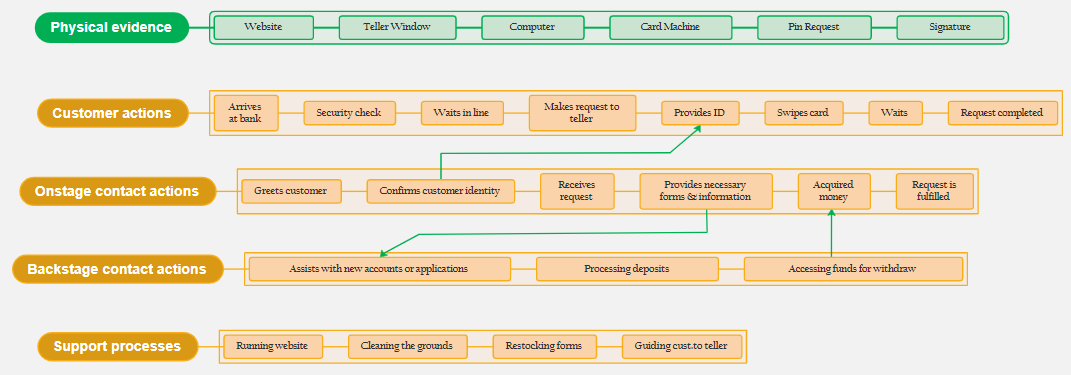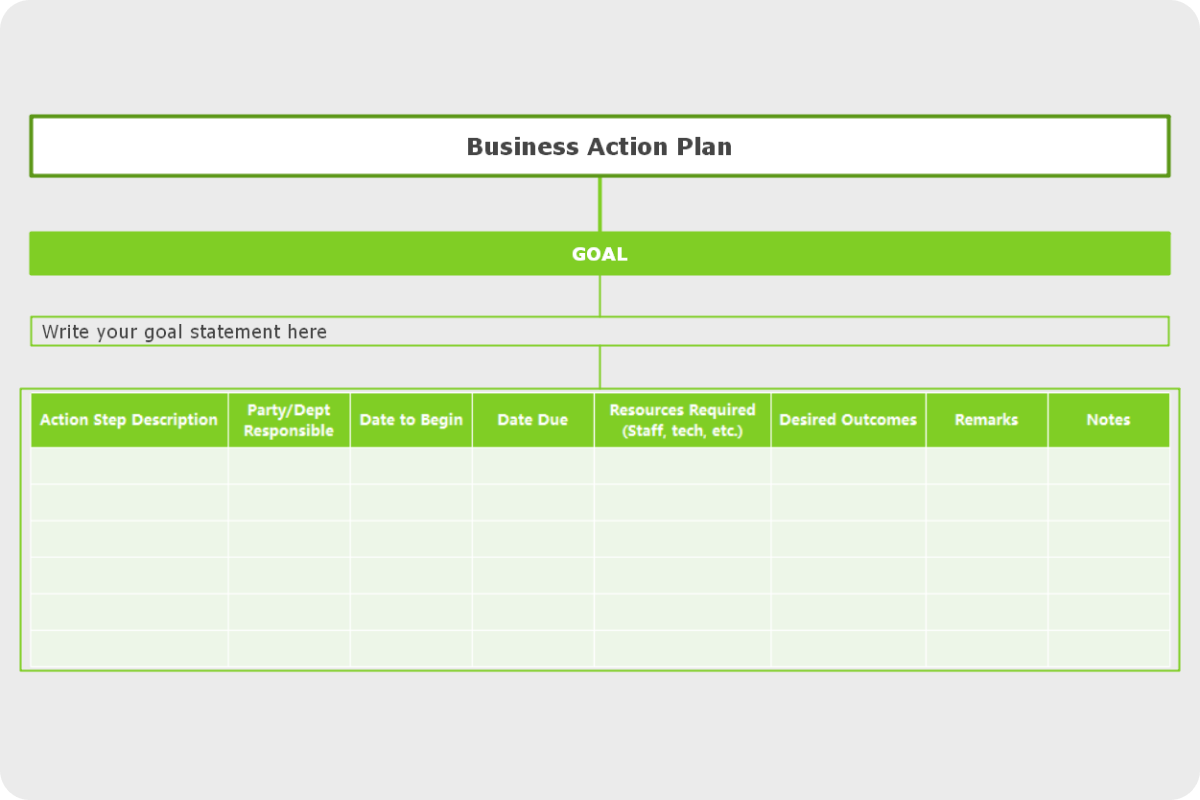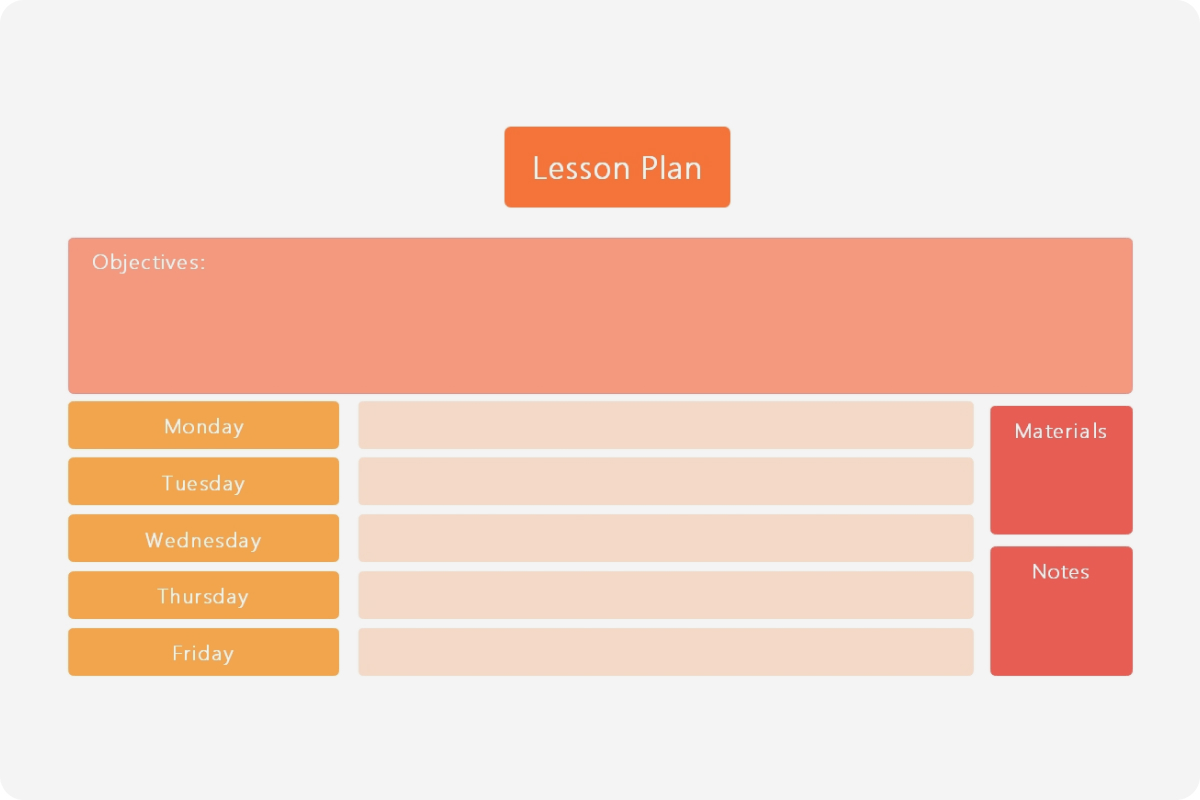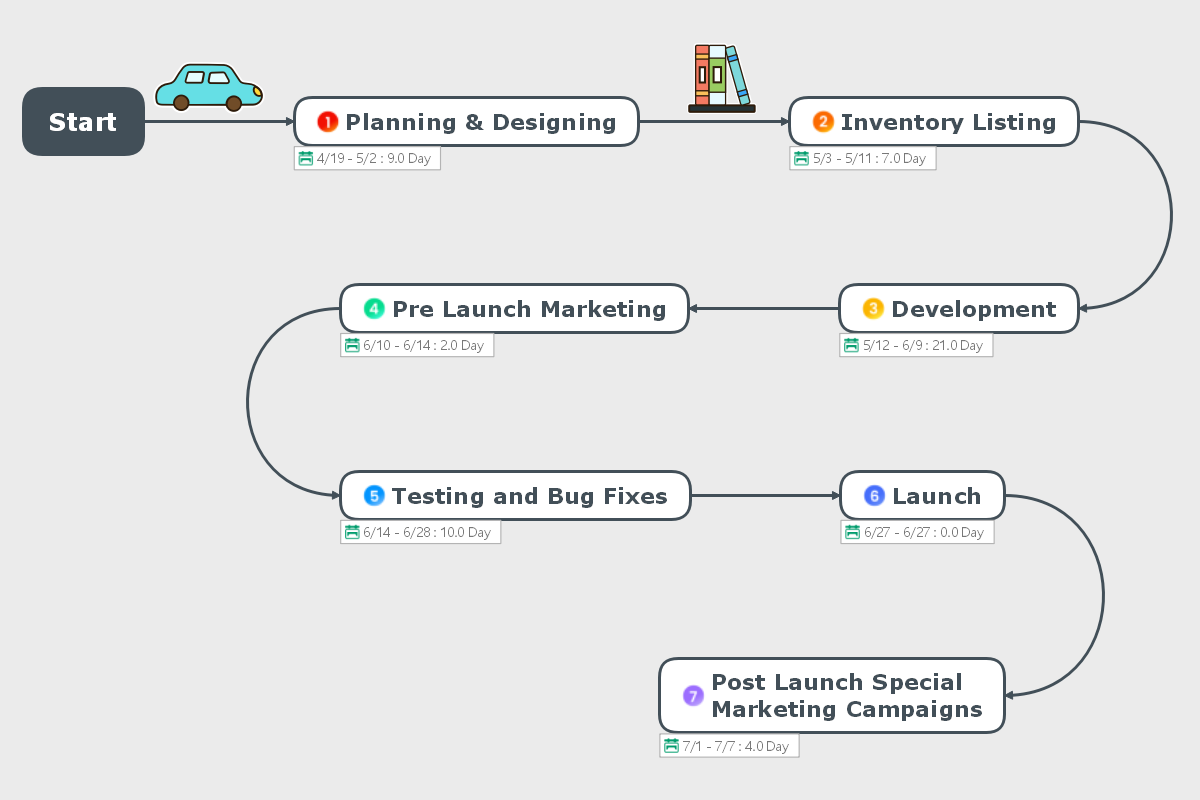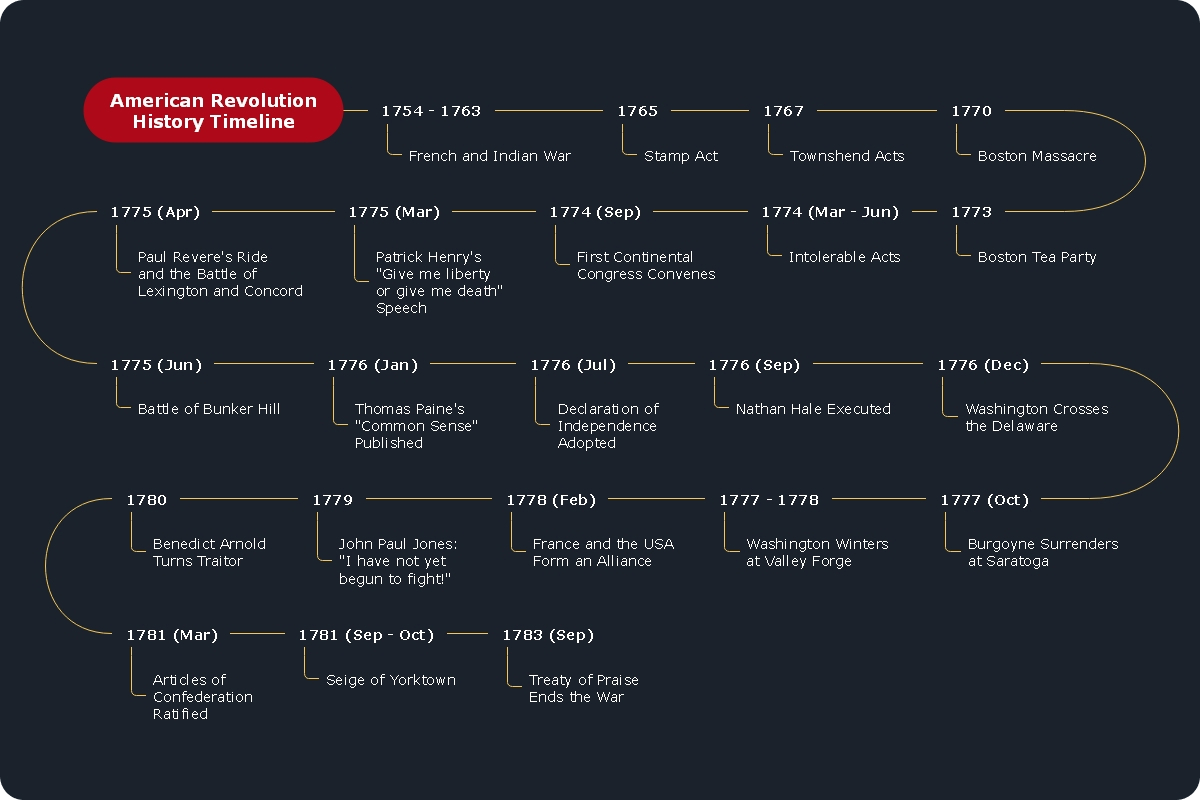About the Service Blueprint Template
What is a service blueprint?
When providing a service to customers, you might find it challenging to identify areas that could be improved or what aspects of your service or products are not doing well. Providing interventions at the exact moment in the service processes and providing concrete answers to several questions can make a difference in how your service and company grow. Service is a multi-layered, complex process that involves several human workforce and technologies that work together.
By definition, a service blueprint is a framework that illustrates the relationships between several service components, including people, processes, and props (digital and physical evidence), that are directly connected to touchpoints in particular customer journeys. Just like customer-journey maps, blueprints are vital in complex situations that span various service-related offerings.
It is a structure that guides you in designing a blueprint of the service processes. To make innovations and create vital changes that promote customer satisfaction, you have to visualize every step and actor from the customers to the third-party suppliers. As complex as it can get, the service blueprint will simplify the task.
Service Blueprint Benefits
Structuring a service blueprint is a collaborative process that allows insights and inputs from stakeholders, a range of teams, and staff to identify a unified source of truth. Engagements in blueprinting, companies can:
- Provide clarity within the vague service landscape
- Create a unified source of truth and information
- Achieve and align the goals
- Agree on tactical actions and improvements
- Have a clear vision of intangible services
- Determine potential gaps and areas to improve on in the service experience
- Reveal interconnectedness between elements of your service
- Empower and inspire organizations to drive meaningful changes
How to create a service blueprint?
G. Lynn Shostack first introduced the service blueprint diagram in 1984 during the Harvard Business Review. Before exploring how to do this diagram, it would also be fitting to familiarize its components. This way, you can have a more precise grasp of how the chart is structured. See the list below for the five main categories of this blueprint:
- Physical Evidence. This is what customers and even employees come in contact with. The category includes locations, such as the company website or a physical store, signages, notifications, receipts, or confirmation emails.
- Customer actions. This category here describes what customers are doing as they experience the service. A few examples would include customers visiting the website, talking to an employee, making a purchase, placing and accepting orders.
- Frontstage actions. This includes what customers physically see and who they interact with. An employee might greet a customer visiting a store location, respond to queries through chat, send emails, take orders, or provide status information.
- Backstage actions. This includes all other employee preparations, activities, or responsibilities that customers do not see but can make services possible. A few examples in this category would be writers providing content on the website or through emails or those tasked to package orders.
- Support processes. Under this category can be third-party suppliers who deliver logistics and other equipment, carrier service, payment, or delivery systems.
- Optional categories. Suppose you wish to be more detailed with your diagram. In that case, you can provide timeframes of how long each step will take to finish, a success metric to evaluate goals, and customers' emotions recorded throughout the project process.
Generally, a service blueprint centers on the customers. They provide a clear illustration of the service design, which eventually helps companies refine their business processes and provide memorable and pleasing customer experiences.
Sure the diagram can be complex for most parts, especially for huge services. Here are the steps of building a service blueprint template:
- Identify a customer scenario. Since this blueprint focuses more on the customers, you need first to figure out a customer scenario that you wish to explore. It could be a new process or an existing one. It can also be beneficial to include an actual customer in the conversation so the scenario and experiences could be as accurate as possible.
- Lay out customer experiences. Whatever scenario you have plotted from the first step, map out the possible actions customers will take chronologically.
- Include other categories in the template. After you have laid out all the complete customer service experience, it is time to fill other categories to the customer actions. This includes support processes, backstage and frontstage actions, time, physical evidence, and more.
- Clear out lanes of action and responsibility. You can use different lines of separation to clearly mark each category and illustrate ways various actors' interactions for the entirety of the service process:
- Use the line of interaction to emphasize where the customers interact with the employees and its services.
- The line of visibility signifies where the organizational process or employee becomes invisible to customers.
- You can use the line of internal action to highlight where employees or partners who do not interact with customers step in to support the services.
- Highlight cross-functional relationships. After filling out each category, you can add another level of detail to your blueprint by including arrows. As you have laid out all the steps in each lane, it is also fitting to show dependencies and relationships that function across various categories using arrows.
Service Blueprint Examples
Whether you are ready to create your service blueprint template or probably would want to look at more examples of how this diagram looks, here are some of them below:
Restaurant Service Blueprint
You might already know how essential quality of service is in restaurants, and it has become a vital factor in success in restaurant businesses. You can see how complex yet detailed the example for restaurant service is as owners and managers might have various processes for dining-in and takeaway meals. The service blueprint plays a crucial role in the restaurant business as they may identify customer behavior on eating out through the diagram.
Through the service blueprint, a restaurant might intervene in areas where customers feel like there is something wrong, either with the service or the food itself. The good thing about a detailed blueprint is that you can quickly identify where to focus on your strategy.
